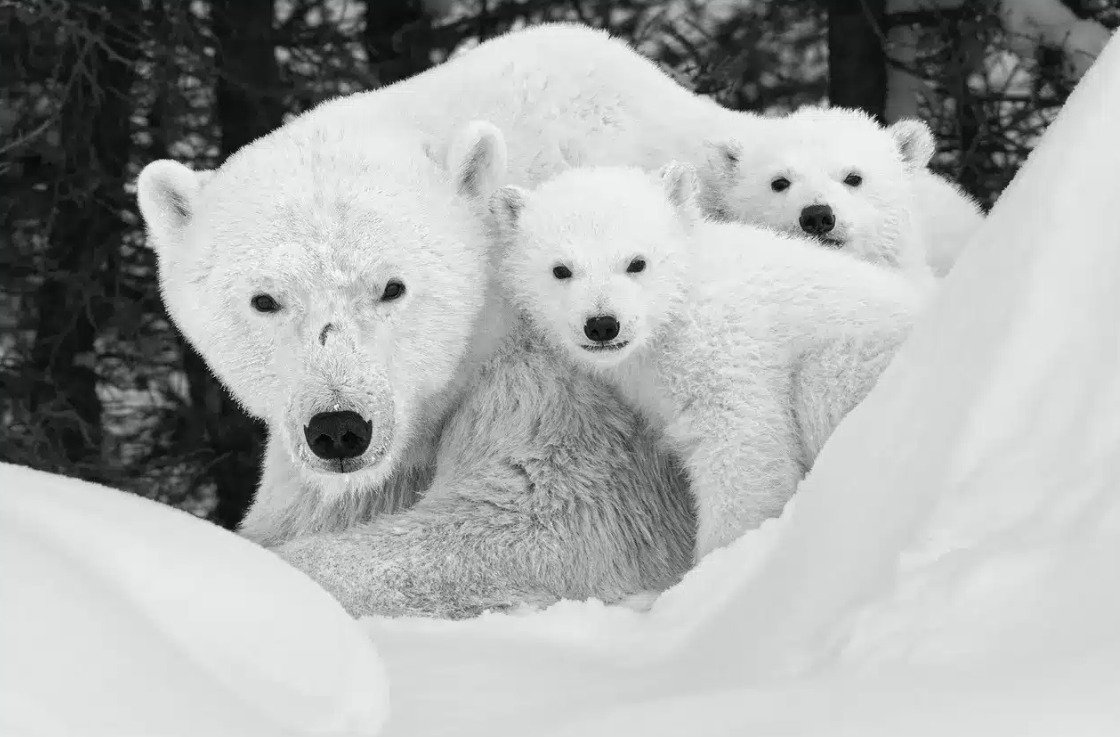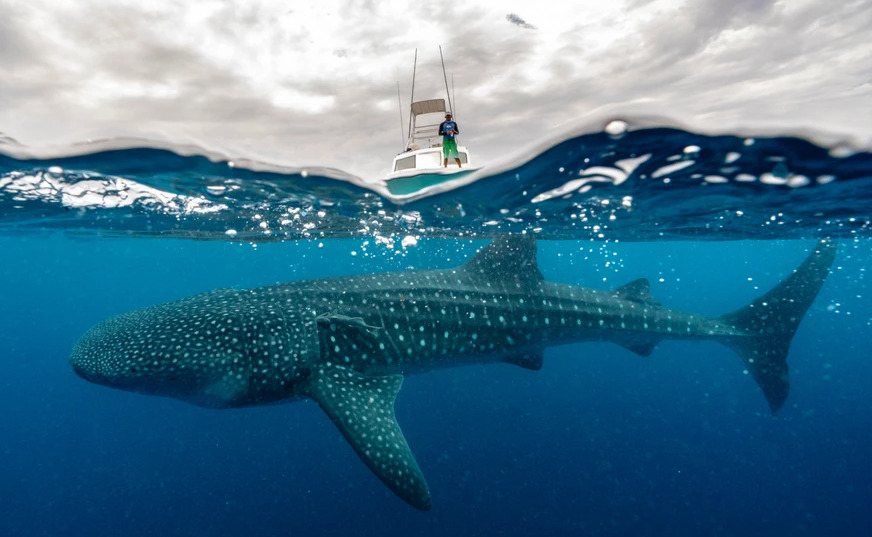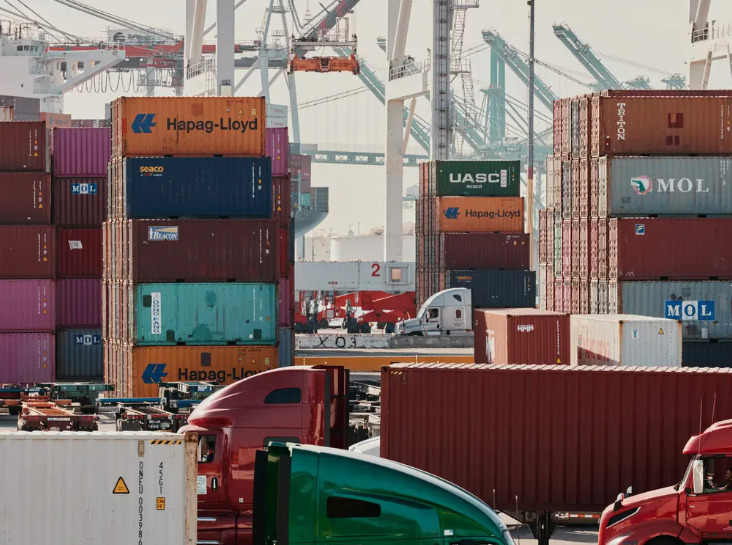
Paul Nicklen: A Reverence for Nature
Standing in front of any of Canadian photographer Paul Nicklen’s large-scale images in the current exhibition at Hilton Contemporary, one cannot help but be totally…
Thought Leader: Paul Nicklen

This piece is written by Cristina Mittermeier.
When my partner Paul Nicklen and I capture wildlife through our lenses, it’s more than just photography — it’s about building a bridge between worlds. Our goal is to inspire a deeper appreciation for the beauty and fragility of marine life and the heroes protecting it on the frontlines. That journey begins with respect and understanding for the animals we document.
Every encounter with marine wildlife — whether a playful sea lion, a graceful manta ray, or a top predator — reminds us that we are visitors in their home. This understanding is especially important when working with species often labeled “dangerous.” Over the years, Paul and I have photographed some of the ocean’s most misunderstood predators, from leopard seals to orcas, without harm. Over time, we’ve discovered that the secret lies in reading their behavior, respecting their boundaries, and maintaining a healthy level of caution.
Of all the creatures we encounter, sharks stand out to me for their essential role in ocean health and their undeserved reputation as villains. Decades of sensationalized media and blockbuster films have painted them as toothy terrors. Still, after countless interactions, I’ve found them to be curious, intelligent, and vital to the balance of marine ecosystems.
Sharks have been on Earth for over 400 million years, and they’re incredibly diverse, with more than 530 species worldwide. Take the whale shark, Earth’s largest shark (and fish!). Averaging 40 feet long, this gentle giant eats plankton with teeth so small they’re almost invisible. There’s also the zebra shark. These stunning creatures are incredibly docile, using their sandpaper-like teeth to graze on snails and other invertebrates.
Sharks play an irreplaceable role in maintaining marine ecosystems. As apex predators, they regulate food webs and protect critical habitats like coral reefs, seagrass meadows, and mangroves. Thriving shark populations are an excellent indicator of ecosystem health; without them, entire ecosystems can collapse.
Despite their importance, many shark populations are in steep decline, with over a third of all shark and ray species now threatened with extinction. Zebra sharks are no exception, having been hit particularly hard by the shark fin trade in the Indo-Pacific.
Amid these challenges, I’ve seen hope in action. On our latest expedition aboard the SeaLegacy 1, Paul and I visited Raja Ampat, Indonesia. Once heavily degraded by overfishing, this area has become one of the world’s most biodiverse marine sanctuaries. Thanks to local communities and global organizations, Raja Ampat is now a beacon of conservation success.
There, I reconnected with my dear friend Dr. Mark Erdmann, co-founder of ReShark. This remarkable global coalition, comprising over 100 organizations, is pioneering the recovery of threatened shark and ray populations. ReShark’s first initiative, the Stegostoma tigrinum Augmentation and Recovery (StAR) Project, is dedicated to reintroducing zebra sharks back into the wild. Raja Ampat’s protected waters serve as a sanctuary, giving the sharks the best possible start to their new lives.
ReShark’s work is the first of its kind. So far, they’ve successfully released over 20 zebra sharks, with plans to release 50-100 pups every year starting in 2025. The work requires a lot of funding and meticulous planning — transporting shark eggs from aquariums worldwide, raising the young in local nurseries, and gradually acclimating them to the ocean before release. It’s an extraordinary effort, and it’s working.
ReShark’s work in Raja Ampat is just the beginning. Dr. Erdmann shared exciting plans to expand to Thailand, with nurseries and sea pens already under development. The first releases there are expected by late 2025.
Even more groundbreaking, this month ReShark is attempting to collect semen from wild zebra sharks in Australia for artificial insemination in aquariums. This innovative approach could diversify the genetic pool of zebra shark pups, offering them a better chance at survival once they are reintroduced into the wild.
ReShark’s team is preparing to expand their efforts to other species, bringing in a new era of marine conservation through rewilding. Rewilding focuses on restoring degraded ecosystems and reintroducing species lost to human impacts. Raja Ampat is a prime example of what’s possible if we give nature a chance.
“At a time when global shark populations have declined by over 70% in the past 50 years, the ReShark initiative provides a ray of hope for some of the most magnificent creatures in the ocean,” says Dr. Erdmann, vice president of Asia Pacific Marine Programs for Conservation International and ocean advisor to SeaLegacy. “By bringing together the Indonesian government, local communities, large public aquariums around the world and shark scientists and conservationists, we’re proving that rewilding of shark populations is not only feasible, it is positively inspirational and a tremendous catalyst for ocean conservation.”
So today, for Giving Tuesday, I invite you to counter the frenzy of Black Friday’s consumerism with generosity. You can support ReShark by donating, or even adopting your own zebra shark! You can also donate to help SeaLegacy continue sharing vital stories like ReShark’s.
By donating to ReShark, SeaLegacy, or other conservation initiatives, you invest in a future where the oceans thrive. Hope is not lost — it’s swimming just beneath the waves.
Paul Nicklen: A Reverence for Nature
Standing in front of any of Canadian photographer Paul Nicklen’s large-scale images in the current exhibition at Hilton Contemporary, one cannot help but be totally…
Thought Leader: Paul Nicklen
Peter Goodman: Exploding Pagers Deliver a Supply Chain Warning
This piece is by WWSG exclusive thought leader, Peter Goodman. The lethal detonation of hand-held pagers and walkie-talkies used by Hezbollah militants this week in…
Thought Leader: Peter Goodman
Peter Goodman: Beneath the Potential Strike at U.S. Ports – Tensions Over Innovation
This piece is by WWSG exclusive thought leader, Peter Goodman. Throughout the centuries, as ships have navigated oceans bearing all manner of freight, the companies…
Thought Leader: Peter Goodman

